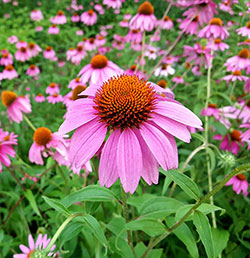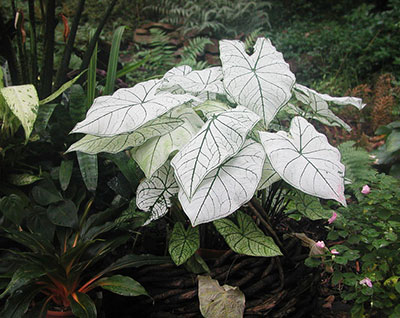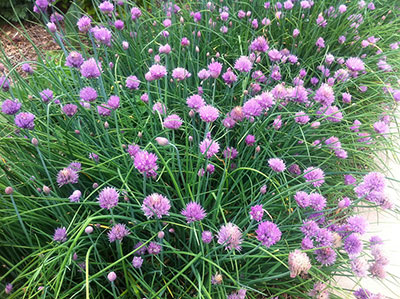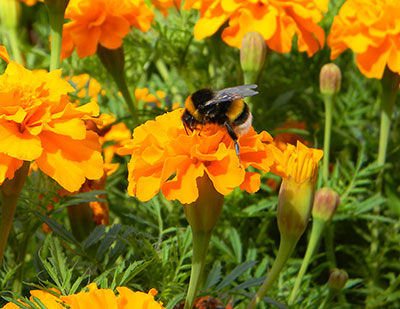Spring Planting Tips

Ideally, soil should be tested for nutrient levels before planting. Fertile soil is the foundation of a beautiful and healthy garden. Soil testing can be done in the fall or in the spring before the lawn greens up.
Learn how to get your soil tested for free
Quick Tips
- If deer are a pest in your garden try planting deer-resistant plants.
- Store left-over vegetable and flower seeds in a cool dry location to ensure viability for planting next year. Use double zip lock bags and place them in the freezer.
- Plant summer annuals after April 15, our average last frost-free date.
Planting Tips by Month
March
-
Unwrap dormant mail-order plants immediately. Keep the roots from drying out, store in a cool protected spot, and plant as soon as conditions allow.
- Plant and/or transplant woody landscape plants. Avoid working with wet soil; wait
until the soil dries out. Common planting mistakes include planting in compacted or
poorly drained soil, planting too deep and buying damaged plants with poor root systems.
- Run garden rows in an east-west direction and plant tallest vegetables on north side
to minimize shading of shorter vegetables.
- Harden off greenhouse-grown transplants by placing them in a sheltered spot outside
for a few hours a day for a week before planting them in a garden. Set out transplants
in the garden on a shady day in late afternoon or early evening to minimize transplant
shock.
- Plant beets, carrots, Chinese cabbage, kale, kohlrabi, lettuce, Swiss chard, turnips,
potatoes, cabbage, broccoli, and cauliflower.
- Sow seeds of sweet peas, beets, radishes, kale, chard, leaf lettuces, spinach and
other greens.
- Continue planting dormant bare-root roses. Container-grown roses may be planted now
through May.
- Start any annual flowers or warm-season vegetables inside your home or greenhouse that are not commercially available in mid-March.
April

-
Don't plant potatoes, eggplant, tomatoes or peppers where any grew last year. This practice, called "crop rotation", will help eliminate the buildup and carryover of insects and diseases within related crops
- Houseplants may need to be repotted annually until they attain their final size. Move
the plant up to a pot that has a diameter 1 to 1½–inch larger than the one it is presently
growing in. Do not fertilize for several weeks after transplanting.
- Keep potted Easter lilies moist, but not too wet. Never let the pot stand in water. Place in a bright location, but avoid full sun, keep in a cool place, and avoid drafts. Remove the long yellow anthers in the center of the flower in order to extend flower life. Cut off flowers as they fade. After all flower buds have opened and all flowers fade, plant outdoors. Easter lilies normally bloom in May.
May
-
Take softwood cuttings of plants like azalea, forsythia, clematis, chrysanthemum and geranium. Dip cuttings into rooting hormone and plant into a 6-inch container with good moist potting soil. Pull clear/opaque plastic bag over top and container. Place in an area with high light but not direct sun. Cutting should be well rooted in 6 weeks if not before.
- When setting out vegetable transplants, pour one cup of starter solution in the hole around the plant. To prepare this solution, mix fertilizer with 15–30–15, 10–53–17, or 20–20–20 analysis at the rate of 2 tablespoons per gallon of water.

- Finish planting by adding muskmelons, squash, eggplant, okra, peppers, and sweet potatoes.
- Direct sow beans, peas, corn and okra. dill, basil and cilantro are some easy direct-sow herbs. If you prefer to get your garden green quickly, garden centers have plenty of young plants available for sale. Plant the “high sugar” or sugar sweet corn varieties after May 1 because the seeds do not germinate in cold garden soils.
- Plant summer-flowering bulbs such as dahlias, gladioli, cannas, and lilies. Soil temperature
should have reached 55 degrees F. With gladiolas, consider planting some additional
bulbs every two weeks until mid-June to ensure a continuous source of bloom.
- Plant peonies no more than 2 inches deep and they should receive at least 6 hours
of sunlight daily. This will ensure flowering.
- Caladiums and annual vinca need warm soil to thrive. Caladium tubers will rot in cool
soil, and vinca will be disease-prone, or exhibit stunted growth. Night temperatures
should regularly be above 60 degrees F before planting them. If caladium ever gets
chilled, it is slow to recover.
- Direct seed easy-to-grow flowering annuals like marigold, zinnia, sunflowers and cosmos. Stagger planting by every week or two through July to have flowers until frost.
June

- If you have a history of squash vine borers, and do not want to use insecticides,
delay planting until July. Early plantings are targeted by the spring flush of overwintering
pupae. Later plantings are exposed to fewer. Squash vine borer has only one generation
per year.
- Check out more information on squash vine borer control.
- Plant pumpkins to have Jack-o-lanterns for Halloween. Other edible winter squashes
can be planted for fall harvest.
- Clematis requires a soil with neutral to slightly basic soil. Test and amend your
soil with lime, if necessary, before planting clematis. For best results, keep clematis
watered and mulch the root system to keep it cool during the summer heat.
- Plant tropical water lilies when water temperatures rise above 70 degrees. For those
of you who have a water garden, once you’ve had a tropical lily, you will want one
year after year.
- Just because it's almost summer doesn’t mean it is too late to plant annuals. Direct-seed sunflowers, zinnias, Mexican sunflowers, cosmos, marigolds, basil and dill while purchased plants can be transplanted.